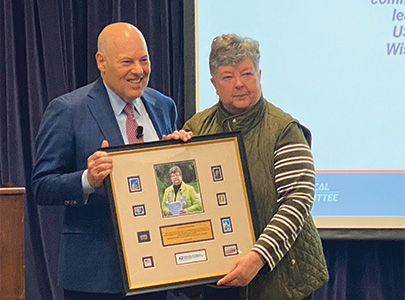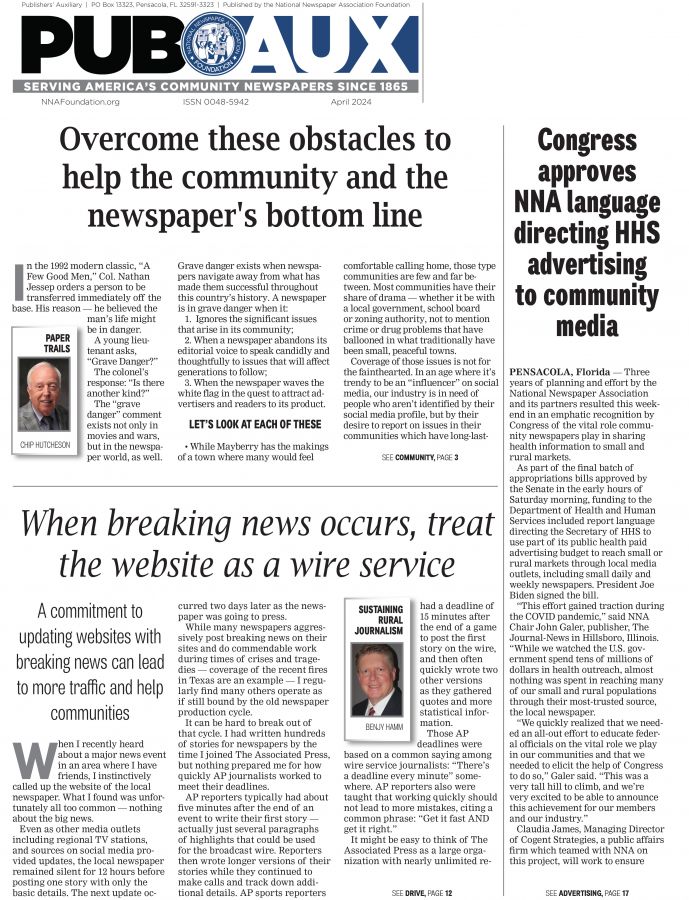What’s old is new again
Nov 1, 2016
M
y flash session focused on newspapers returning to the basics: engaging readers, maintaining and building circulation, helping support single-copy sales and reducing subscriber churn.
By Jerry Lyles
Vice President Newspaper Relations | AMG|Parade
My flash session focused on newspapers returning to the basics: engaging readers, maintaining and building circulation, helping support single-copy sales and reducing subscriber churn.
When returning to the basics, many papers are revisiting practices that have changed and returning emphasis to a number of newspaper features that have almost disappeared in recent years. The session focused notably on several services once provided by newspapers for free that many had begun charging for in a bid to cover costs or increase revenue.
Announcements
The first example is one that created a significant impact to newspapers. Announcements of engagements, weddings, anniversaries, society debuts and even birthdays had been a staple of many newspapers for decades. A few years ago, many papers began charging for announcements that were previously complimentary. Over time, there were fewer and fewer readers willing to pay the price for this service. However, one participant in this flash session recently went back to a free model, framing the announcements as news within their local community. The wedding/engagement announcements at this paper went from one or two announcements to three or four pages per week, and the single-copy sales dramatically increased. A lively and popular announcements section could provide newspaper revenue opportunities in the future through advertising for event venues, bridal shops, florists and other services.
Death notices and obituaries have seen a similar trend to announcements in recent years. Many newspapers that provided complimentary death notices and obituaries began charging for the service, but have since reversed those changes to provide both at no charge. Frequently, newspapers have seen increases in their single-copy sales as families want to save multiple copies of the edition featuring their loved one.
TV Listings
The stamina of TV listings also indicates a return to the past for many newspapers. Over the years, more and more papers determined that the rise of online listings and built-in cable guides had diminished the number of readers interested in this feature and began eliminating this service. However, they quickly realized the core group of readers who appreciated this feature were more vocal and larger than thought. Newspapers now are looking for more robust content with their listings product, along with more color. They are also increasingly less dependent on an ad-driven model for this feature and instead looking more to the readers who are willing to pay for this section.
Real Estate Sections
Although facing a marked decrease in real estate listings, a few newspapers have started independent real estate sections. These sections are more like a magazine with full color and better quality paper stock. Many print a significant number of overruns because realtors are willing to pay for the extra distribution in the county to further promote their business.
Classified Pages
During the last several years, newspaper classified ads have seen a major decline because of the growth of internet sites such as Craigslist. Newspapers have begun to fight back by offering free classifieds for items being sold for less than $20, in an environment that may feel less risky to buyers and sellers than an online website.
Although many of these features may seem antiquated and outdated for today’s readers, many local publications can provide a strong testament to the value of them to their readers and their newspaper. For many publishers, the surprising reactions of their readers—like the protests at the elimination of TV listings or the celebrations at the inclusion of complimentary announcements—have proved that for many newspapers, what is old can indeed be new again.














